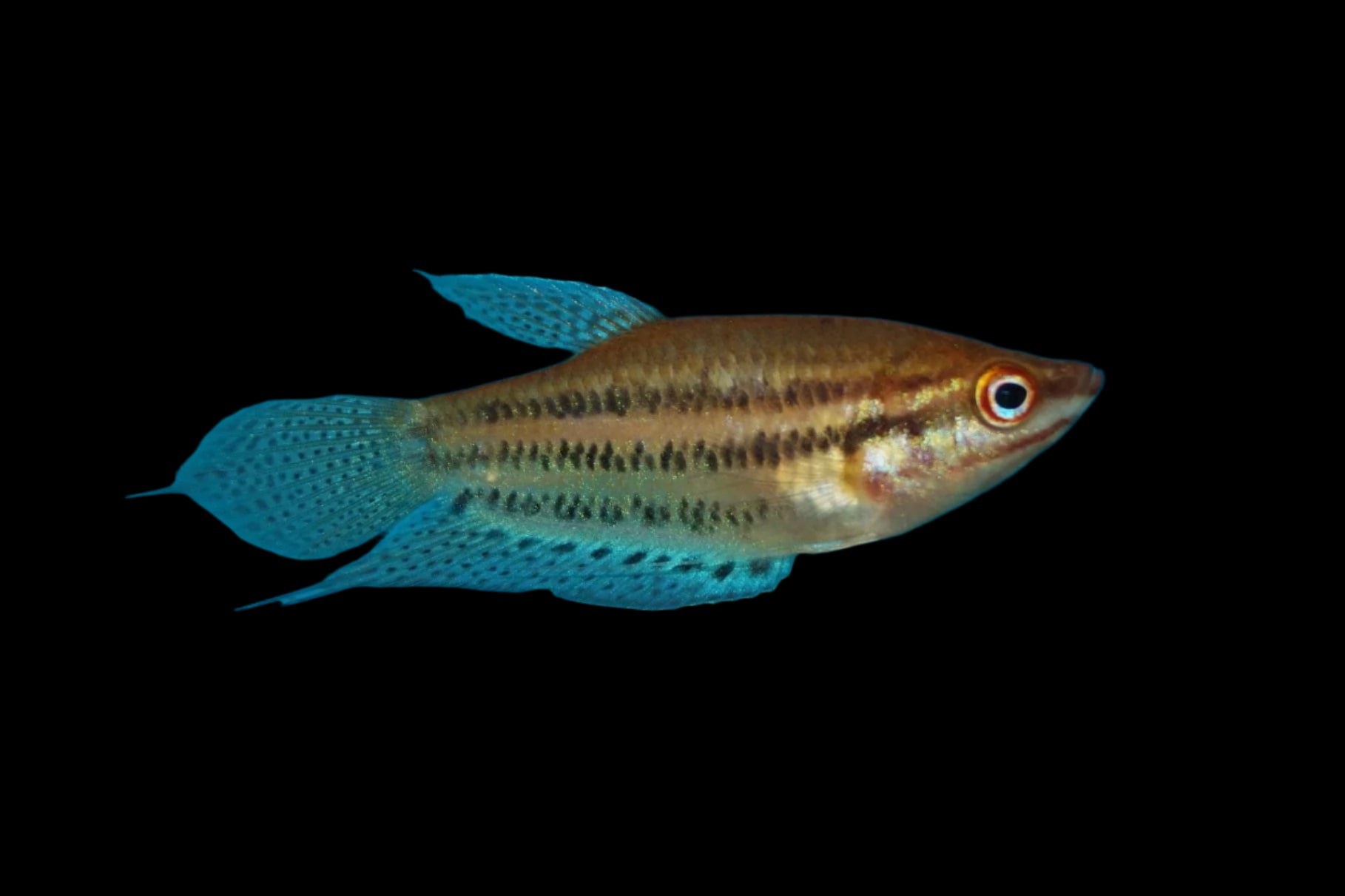Description
Croaking Gourami – A Peaceful Fish with a Voice
(Trichopsis vittata)
The Croaking Gourami (Trichopsis vittata) is a charming and peaceful labyrinth fish named for its unique ability to produce audible "croaking" or chirping sounds—especially during courtship or territorial displays. Small, hardy, and full of character, this species is perfect for calm, planted aquariums where it can show off its subtle beauty and fascinating behavior.
Key Features:
-
Unique Vocalization: One of the few fish that make audible sounds, adding an extra layer of intrigue to your aquarium.
-
Delicate Appearance: Shimmering body with light bronze tones, fine stripes, and a hint of blue iridescence along the fins.
-
Compact Size: Stays small at around 4–5 cm (1.5–2 inches), ideal for nano or mid-sized tanks.
-
Peaceful Nature: Suitable for community setups with other gentle tankmates.
Tank Compatibility:
-
Excellent with other small, non-aggressive fish such as rasboras, small tetras, corydoras, and shrimp
-
Can be kept singly, in pairs, or in small peaceful groups (ensure cover to reduce squabbles among males)
-
Avoid housing with large or aggressive species
Care Requirements:
-
Temperature: 24°C–28°C (75°F–82°F)
-
pH: 6.0–7.5
-
Soft, slightly acidic to neutral water preferred
-
Loves a planted tank with low flow, subdued lighting, and plenty of hiding spots (such as driftwood, leaf litter, and caves)
Feeding Tips:
-
Omnivorous—enjoys high-quality micro pellets, flakes, frozen foods like brine shrimp and daphnia, and live foods for stimulation
-
Feed small amounts once or twice daily for best health and coloration
Why Choose the Croaking Gourami?
With its gentle temperament, manageable size, and fascinating vocal behavior, the Croaking Gourami is a hidden gem in the freshwater hobby. Perfect for tranquil aquascapes, it brings both serenity and surprise to any peaceful aquarium.
Click & Collect
Livestock will only be bagged once you arrive, or if you contact us in advance to request it ready beforehand.
Local Delivery
Order anything from our in-store range and have it delivered right to you.
-
Minimum spend: £50
-
Delivery up to 10 miles: £10
-
Delivery up to 25 miles: £20
Distances are measured “as the crow flies”, not by road.
Once your order is placed, we’ll be in touch to arrange a suitable delivery date and time.
Please note, delivery may take a little longer as we often group orders together to build an efficient delivery run.
Important: If you’re ordering a large aquarium, please ensure someone is available to help unload the van on arrival.
Dry Goods Delivery
-
DX Express: 1 working day, same-day dispatch before noon 0-75kg
-
Express Pallet: 1–3 working days 75-500kg
If you'd like to add more items to an existing order that hasn't yet been dispatched, please place a Click & Collect order and leave a note asking us to combine the orders.
Please note: We currently only dispatch parcels Wednesday to Friday.
Pre-Order
Want the full details? Check out our Terms & Conditions.
Livestock Delivery
Thursday Delivery – £24
-
Dispatched Wednesday afternoon
-
Delivered Thursday before 1pm
-
Order by Wednesday 12 noon
-
Minimum spend: £50
Friday Delivery – £24
-
Dispatched Thursday afternoon
-
Delivered Friday before 1pm
-
Order by Thursday 12 noon
-
Minimum spend: £50
Saturday Delivery – £29
-
Dispatched Friday afternoon
-
Delivered Saturday before 1pm
-
Order by Friday 12 noon
-
Minimum spend: £50
📦 Want to Add to an Existing Order?
No problem! Just place a Click & Collect order and leave a note asking us to link it with your original one (as long as it hasn’t been dispatched yet).
🛒 Dry Goods Now Included!
You can now include dry goods in your livestock delivery – perfect for topping up supplies in one go.
❄️ Please note: We can’t send frozen food with livestock – please order frozen items separately.
⚠️ Delivery Exclusions
Unfortunately, we’re unable to deliver livestock to the following postcodes:
Scotland & Isles:
AB30–AB56, DD8–DD10, DG3–DG9, DG12–DG14, FK17–FK21, KA18–KA19, KA26–KA30, PA20–PA38, PA80, PH3–PH40
Cornwall Isles: TR21–TR25
All of the following postcodes are excluded:
BT, HS, IM, IV, JE, KW
Plus Channel Islands and Shetland Islands
Payment & Security
Your payment information is processed securely. We do not store credit card details nor have access to your credit card information.


